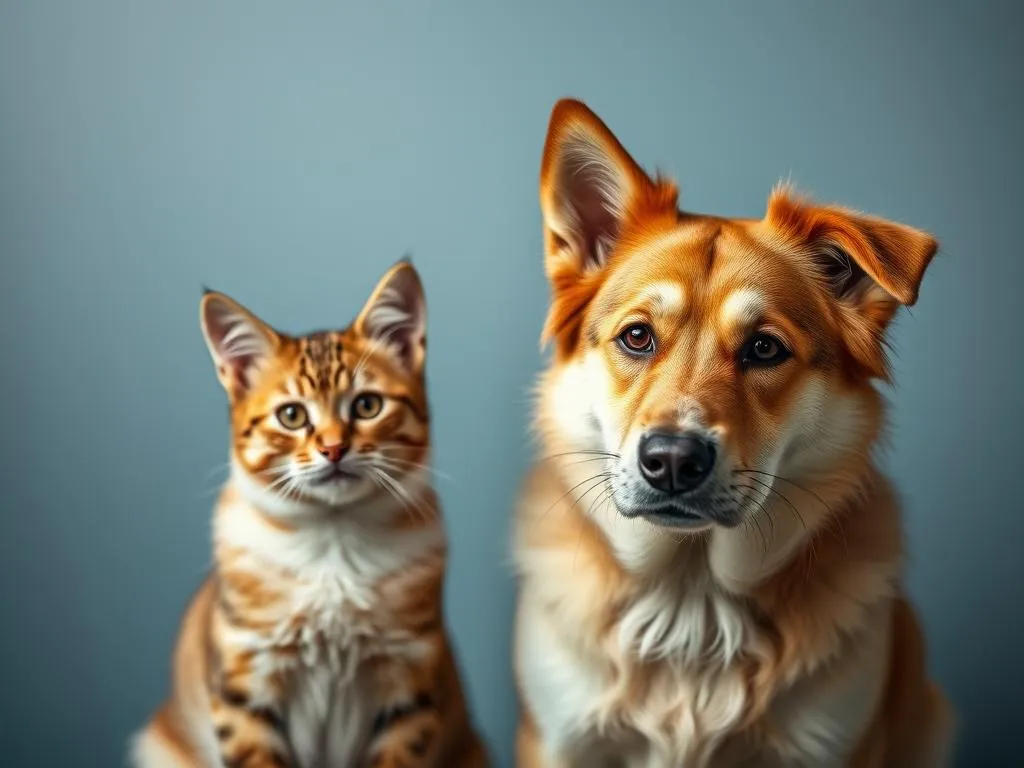
When considering bringing a dog into a home with existing cats, one of the most crucial aspects is selecting dogs that are good with cats. There is a common misconception that dogs and cats cannot coexist peacefully. However, many breeds exhibit friendly, calm, and sociable behaviors that make them excellent companions for felines. Understanding the dynamics between these two popular pet types is essential for ensuring a harmonious household.
Understanding Dog and Cat Dynamics
The Natural Instincts of Dogs and Cats
To appreciate the relationship between dogs and cats, it’s vital to recognize their natural instincts. Dogs are descended from wolves and often carry predatory instincts that can be triggered by smaller animals, including cats. However, this instinct varies significantly among breeds.
On the other hand, cats are inherently territorial creatures. They often view their environment as their domain and can be sensitive to changes, including the introduction of a new dog. Understanding these instincts can help in selecting the right breed and managing their interactions.
Factors Influencing Compatibility
Several factors play a role in determining the compatibility between dogs and cats.
-
Age and Temperament: The age of both pets can significantly impact their interaction. Young puppies may have more energy, while older dogs might be calmer. Similarly, a young cat may be more playful than an older one, who may prefer solitude.
-
Socialization and Training: A well-socialized and properly trained dog is more likely to get along with cats. Training should include exposure to various animals and situations to foster a calm demeanor.
-
Individual Personality: Each dog and cat has a unique personality. Some cats are more tolerant and sociable, while others may be more aloof or aggressive.
Characteristics of Dog Breeds Good with Cats
Temperament Traits
When looking for dogs that are good with cats, certain temperament traits are essential.
-
Friendly and Calm Demeanor: Dogs that are friendly and calm are more likely to coexist peacefully with cats. They should show interest without aggression.
-
High Tolerance and Patience Levels: A dog that can tolerate the quirks of a cat—such as sudden movements or hissing—will help in fostering a peaceful environment.
Trainability
Trainability is another crucial aspect. Dogs that respond well to commands and are eager to please can be taught to respect a cat’s space. Commands like “leave it” and “stay” are vital for maintaining harmony in a multi-pet household.
Energy Level
Dogs and cats have varying energy levels. Matching the energy levels of the two pets can significantly impact their compatibility. A high-energy dog may not be a good fit for a more laid-back cat, while a calm dog may complement an energetic feline.
Top Dog Breeds That Are Good with Cats
Certain breeds are particularly known for their compatibility with cats. Here are some of the top dogs that are good with cats:
Labrador Retriever
Labrador Retrievers are renowned for their friendly nature and adaptability. They tend to be sociable, making them a great choice for families with cats. Their playful demeanor often encourages positive interactions.
Golden Retriever
Golden Retrievers are gentle and patient, making them excellent companions for cats. Their family-friendly behavior and affectionate nature help foster a peaceful household dynamic.
Basset Hound
Basset Hounds have a laid-back attitude and low energy, which can be ideal for households with cats. Their calm demeanor allows them to coexist comfortably without overwhelming a feline companion.
Cavalier King Charles Spaniel
This breed is affectionate and sociable, known for its loving nature. Cavalier King Charles Spaniels enjoy companionship, making them likely to get along with cats.
Beagle
Beagles are friendly and have a cooperative spirit, making them excellent dogs that are good with cats. Their friendly nature allows them to integrate well into multi-pet households.
Pug
Pugs have a playful and easy-going personality, which can charm even the most aloof cats. Their small size and gentle nature often help them to coexist with felines.
Maltese
Maltese dogs are known for their gentle temperament and small size, making them a suitable choice for homes with cats. They are often playful yet calm, allowing for positive interactions with feline companions.
Newfoundlander
Newfoundlanders are gentle giants known for their calmness and patience. Their large size is balanced by a sweet disposition, making them surprisingly good with cats, especially if introduced properly.
Preparing Your Home for a Dog and Cat
Creating Safe Spaces
Before introducing a new dog to your home, it’s important to create safe spaces for both pets. This means having separate areas where the dog and cat can retreat to feel secure. Cats may need elevated spaces for escape, while dogs should have their own comfortable spots away from the cat.
Gradual Introduction Techniques
Introducing a new dog to resident cats should be done gradually. Start by allowing them to sniff each other’s belongings before any face-to-face meetings. This helps them get accustomed to each other’s scents.
When you feel they are ready to meet, do so in a controlled environment. Keep the dog on a leash and allow the cat to approach at its own pace. Always monitor their interactions to ensure safety.
Supervision and Management
Initially, all interactions should be supervised. This helps prevent any potential issues and allows you to intervene if necessary. Gradually increase the time they spend together as they become more comfortable with each other.
Training Tips for Dogs Living with Cats
Basic Obedience Commands
Teaching your dog basic obedience commands is vital for a harmonious household. Commands like “leave it” and “stay” can help manage the dog’s behavior around the cat. Regular training sessions will reinforce these commands and improve overall behavior.
Positive Reinforcement Techniques
Using positive reinforcement techniques is effective in encouraging good behavior. Reward your dog with treats and praise when they respond appropriately to the cat. This builds a positive association and reinforces desired behaviors.
Socialization Strategies
Socializing your dog is essential for ensuring they are comfortable around cats. Expose them to various environments, people, and other animals. This exposure helps reduce anxiety and promotes a calm demeanor around the cat.
Signs of a Good Relationship Between Dogs and Cats
Body Language Indicators
Understanding body language is crucial in determining the comfort level of both pets. Signs of a good relationship include relaxed postures, wagging tails from dogs, and slow blinking from cats. These signals indicate that both animals feel secure in each other’s presence.
Play and Interaction
Playful interactions, such as gentle chasing or shared toys, are excellent indicators of a budding friendship. If both pets engage in play without signs of stress, it’s a good sign of compatibility.
Avoiding Aggression
Recognizing signs of stress or potential aggression is vital. Hissing, growling, or a stiff posture can indicate discomfort. If these signs arise, it may be necessary to separate the pets and revisit the introduction process.
Common Challenges and Solutions
Aggression or Fear Responses
If your dog displays aggression or fear towards the cat, it’s crucial to identify triggers. This may involve consulting with a professional trainer or behaviorist to develop a tailored strategy for addressing these issues.
Space and Resource Management
Managing space and resources is key to avoiding conflict. Ensure that both pets have their own food, toys, and resting areas. This helps reduce competition and allows each pet to feel secure in their territory.
Continuous Monitoring
Ongoing observation is essential in a multi-pet household. Regularly assess interactions to ensure that both pets are comfortable. Be prepared to make adjustments to their living arrangements as needed.
Conclusion
Choosing the right dogs that are good with cats and preparing for their integration into your home is vital for fostering a harmonious environment. By understanding the dynamics between dogs and cats, you can create a peaceful multi-pet household. Embracing both species can lead to a joyful companionship filled with love and playful interactions. Pet owners should thoroughly research specific breeds and consider their unique lifestyles to ensure compatibility before making a decision.









